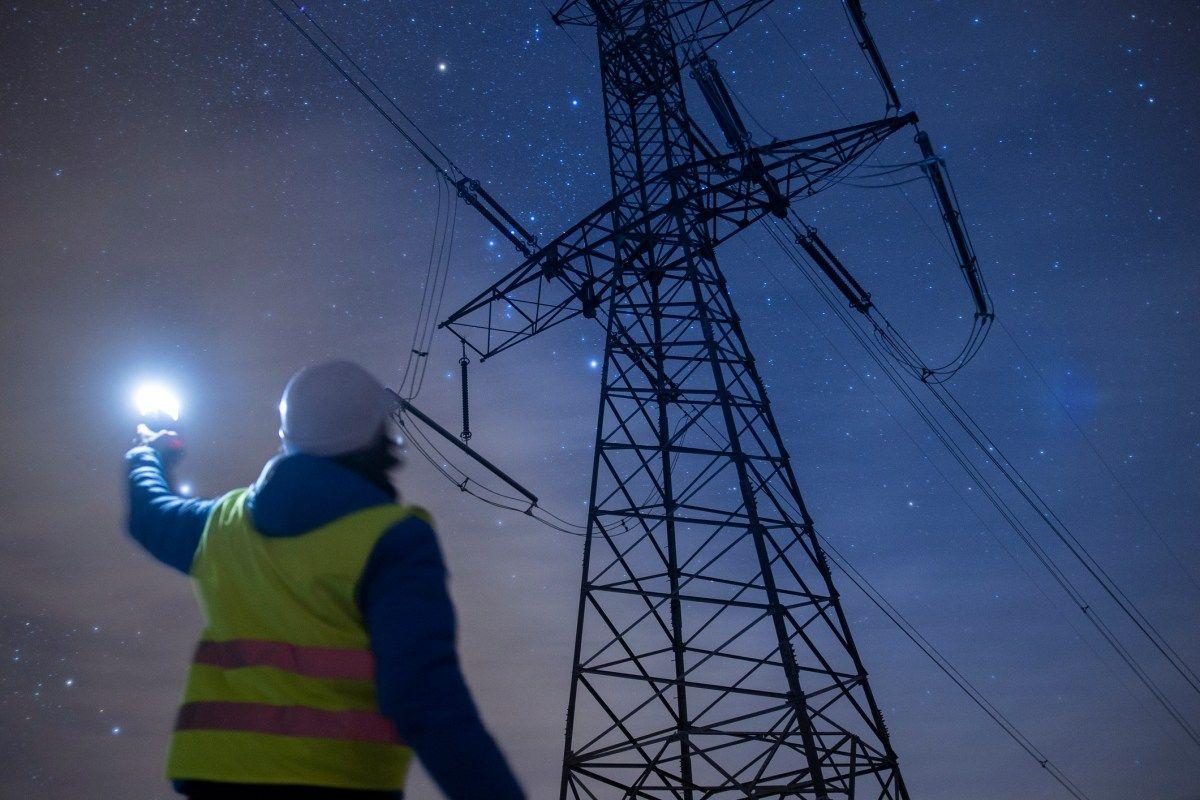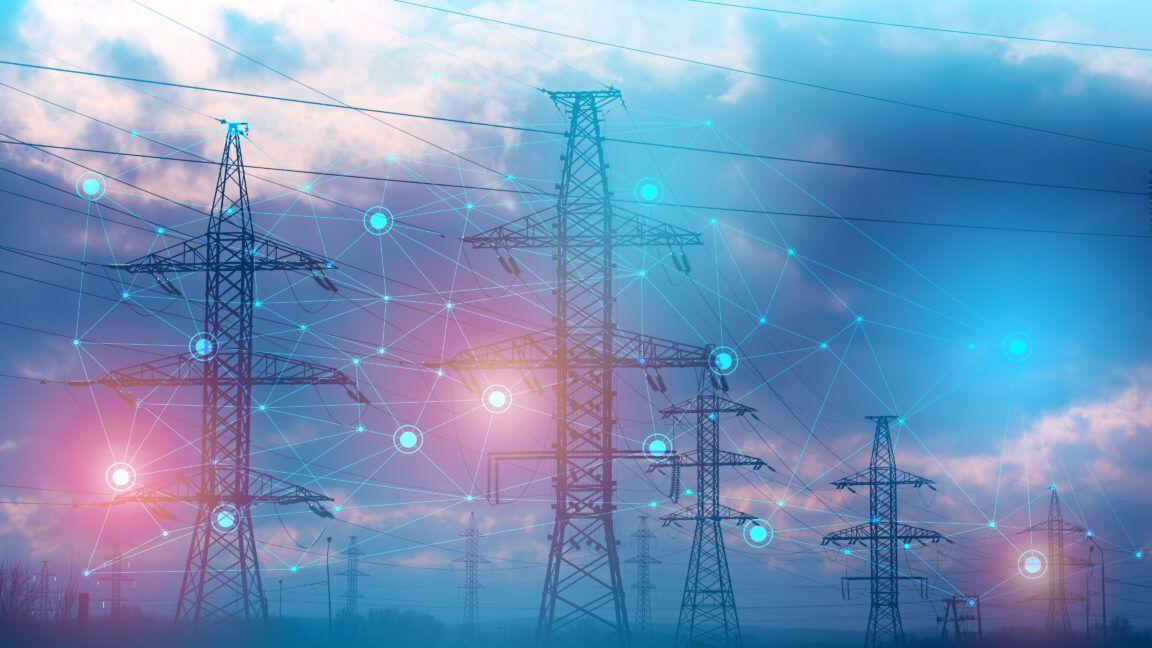New AI Model Enhances Power Grid Reliability Amid Renewable Energy Surge
2 Sources
2 Sources
[1]
New AI model could make power grids more reliable amid rising renewable energy use
Multi-Fidelity Graph Neural Networks: A New AI Solution The new model is based on multi-fidelity graph neural networks (GNNs), a type of AI designed to improve power flow analysis -- the process of ensuring electricity is distributed safely and efficiently across the grid. The "multi-fidelity" approach allows the AI model to leverage large quantities of lower-quality data (low-fidelity) while still benefiting from smaller amounts of highly accurate data (high-fidelity). This dual-layered approach enables faster model training while increasing the overall accuracy and reliability of the system. Enhancing Grid Flexibility for Real-Time Decision Making By applying GNNs, the model can adapt to various grid configurations and is robust to changes, such as power line failures. It helps address the longstanding "optimal power flow" problem, determining how much power should be generated from different sources. As renewable energy sources introduce uncertainty in power generation and distributed generation systems, along with electrification (e.g., electric vehicles), increase uncertainty in demand, traditional grid management methods struggle to effectively handle these real-time variations. The new AI model integrates both detailed and simplified simulations to optimize solutions within seconds, improving grid performance even under unpredictable conditions. "With renewable energy and electric vehicles changing the landscape, we need smarter solutions to manage the grid," said Negin Alemazkoor, assistant professor of civil and environmental engineering and lead researcher on the project. "Our model helps make quick, reliable decisions, even when unexpected changes happen." Key Benefits: This innovation in AI modeling could play a critical role in enhancing power grid reliability in the face of increasing uncertainties. Ensuring the Future of Energy Reliability "Managing the uncertainty of renewable energy is a big challenge, but our model makes it easier," said Ph.D. student Mehdi Taghizadeh, a graduate researcher in Alemazkoor's lab.Ph.D. student Kamiar Khayambashi, who focuses on renewable integration, added, "It's a step toward a more stable and cleaner energy future."
[2]
New AI model could make power grids more reliable amid rising renewable energy use
As renewable energy sources such as wind and solar become more widespread, managing the power grid has become increasingly complex. Researchers at the University of Virginia have developed an innovative solution: an artificial intelligence model that can address the uncertainties of renewable energy generation and electric vehicle demand, making power grids more reliable and efficient. Their papers, "Multi-fidelity Graph Neural Networks for Efficient Power Flow Analysis Under High-Dimensional Demand and Renewable Generation Uncertainty," and "Hybrid Chance-Constrained Optimal Power Flow under Load and Renewable Generation Uncertainty Using Enhanced Multi-Fidelity Graph Neural Networks" have been published in Electric Power Systems Research and Journal of Machine Learning for Modeling and Computing, respectively. Multi-fidelity graph neural networks: A new AI solution The new model is based on multi-fidelity graph neural networks (GNNs), a type of AI designed to improve power flow analysis -- the process of ensuring electricity is distributed safely and efficiently across the grid. The "multi-fidelity" approach allows the AI model to leverage large quantities of lower-quality data (low-fidelity) while still benefiting from smaller amounts of highly accurate data (high-fidelity). This dual-layered approach enables faster model training while increasing the overall accuracy and reliability of the system. Enhancing grid flexibility for real-time decision making By applying GNNs, the model can adapt to various grid configurations and is robust to changes, such as power line failures. It helps address the longstanding "optimal power flow" problem, determining how much power should be generated from different sources. As renewable energy sources introduce uncertainty in power generation and distributed generation systems, along with electrification (e.g., electric vehicles), increase uncertainty in demand, traditional grid management methods struggle to effectively handle these real-time variations. The new AI model integrates both detailed and simplified simulations to optimize solutions within seconds, improving grid performance even under unpredictable conditions. "With renewable energy and electric vehicles changing the landscape, we need smarter solutions to manage the grid," said Negin Alemazkoor, assistant professor of civil and environmental engineering and lead researcher on the project. "Our model helps make quick, reliable decisions, even when unexpected changes happen." Key benefits: This innovation in AI modeling could play a critical role in enhancing power grid reliability in the face of increasing uncertainties. Ensuring the future of energy reliability "Managing the uncertainty of renewable energy is a big challenge, but our model makes it easier," said Ph.D. student Mehdi Taghizadeh, a graduate researcher in Alemazkoor's lab.Ph.D. student Kamiar Khayambashi, who focuses on renewable integration, added, "It's a step toward a more stable and cleaner energy future."
Share
Share
Copy Link
Researchers at the University of Virginia have developed an innovative AI model using multi-fidelity graph neural networks to improve power grid management, addressing challenges posed by increasing renewable energy integration and electric vehicle adoption.

Innovative AI Model Tackles Power Grid Challenges
Researchers at the University of Virginia have developed a groundbreaking artificial intelligence (AI) model that could revolutionize power grid management in the face of increasing renewable energy adoption. The model, based on multi-fidelity graph neural networks (GNNs), addresses the growing complexities in power distribution caused by the integration of renewable energy sources and the rise of electric vehicles
1
2
.Multi-Fidelity Approach: Balancing Speed and Accuracy
The new AI model employs a multi-fidelity approach, which allows it to process large amounts of lower-quality data while still benefiting from smaller quantities of highly accurate information. This innovative method enables faster model training while maintaining high levels of accuracy and reliability in power flow analysis
1
2
.Dr. Negin Alemazkoor, assistant professor of civil and environmental engineering and lead researcher on the project, explains, "With renewable energy and electric vehicles changing the landscape, we need smarter solutions to manage the grid. Our model helps make quick, reliable decisions, even when unexpected changes happen"
1
2
.Addressing the Optimal Power Flow Problem
One of the key challenges in power grid management is the "optimal power flow" problem, which involves determining the most efficient distribution of power from various sources. The new AI model tackles this issue by adapting to different grid configurations and remaining robust in the face of changes, such as power line failures
1
2
.Real-Time Decision Making and Grid Flexibility
Traditional grid management methods struggle to handle the real-time variations introduced by renewable energy sources and distributed generation systems. The new AI model integrates both detailed and simplified simulations to optimize solutions within seconds, improving grid performance even under unpredictable conditions
1
2
.Related Stories
Enhancing Power Grid Reliability
The innovation in AI modeling could play a crucial role in enhancing power grid reliability as the energy landscape becomes increasingly complex. By leveraging GNNs, the model can quickly adapt to various scenarios and make informed decisions in real-time
1
2
.Future Implications for Energy Management
Ph.D. student Mehdi Taghizadeh, a graduate researcher in Alemazkoor's lab, notes, "Managing the uncertainty of renewable energy is a big challenge, but our model makes it easier"
1
2
. Another Ph.D. student, Kamiar Khayambashi, who focuses on renewable integration, adds, "It's a step toward a more stable and cleaner energy future"1
2
.The research team's findings have been published in two papers: "Multi-fidelity Graph Neural Networks for Efficient Power Flow Analysis Under High-Dimensional Demand and Renewable Generation Uncertainty" in Electric Power Systems Research, and "Hybrid Chance-Constrained Optimal Power Flow under Load and Renewable Generation Uncertainty Using Enhanced Multi-Fidelity Graph Neural Networks" in the Journal of Machine Learning for Modeling and Computing
2
.As the world continues to shift towards renewable energy sources and electric vehicles, this AI model represents a significant step forward in ensuring the reliability and efficiency of power grids in the face of increasing uncertainties.
References
Summarized by
Navi
Related Stories
AI's Energy Paradox: How Data Centers Are Reshaping Global Power Demand and Climate Goals
18 Nov 2025•Technology

Google Partners with PJM to Deploy AI for Streamlining Electrical Grid Connections
11 Apr 2025•Technology

AI's Growing Energy Demands Spur Innovation in Sustainable Computing
19 Mar 2025•Technology

Recent Highlights
1
Google launches Gemini 3 Flash as default AI model, delivering speed with Pro-grade reasoning
Technology

2
OpenAI launches ChatGPT app store, opening doors for third-party developers to build AI-powered apps
Technology

3
OpenAI launches GPT Image 1.5 as AI image generator war with Google intensifies
Technology





